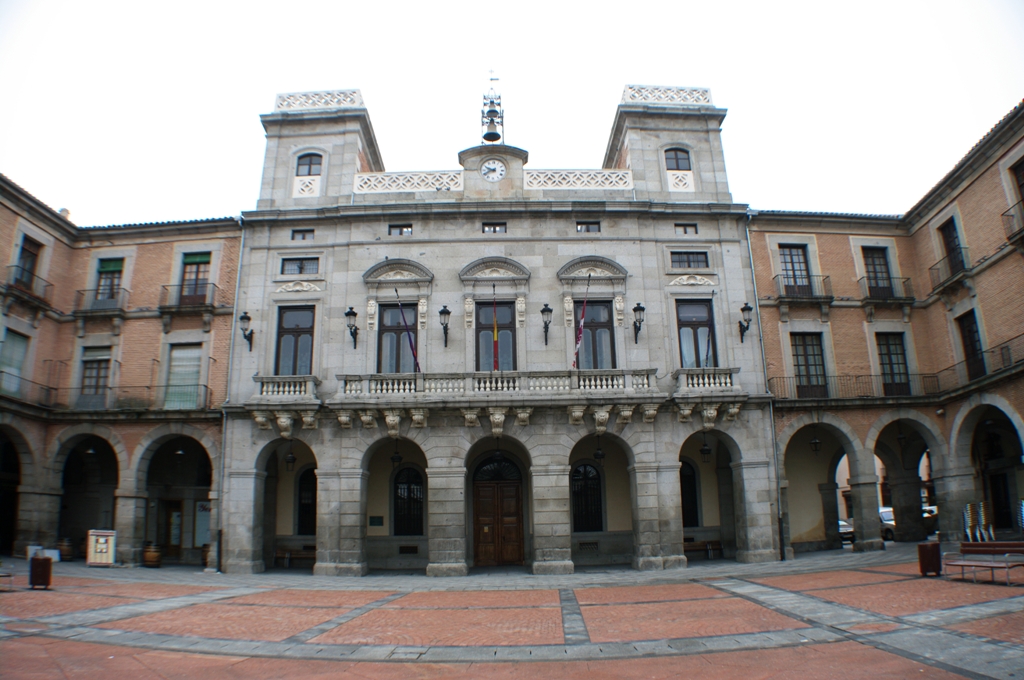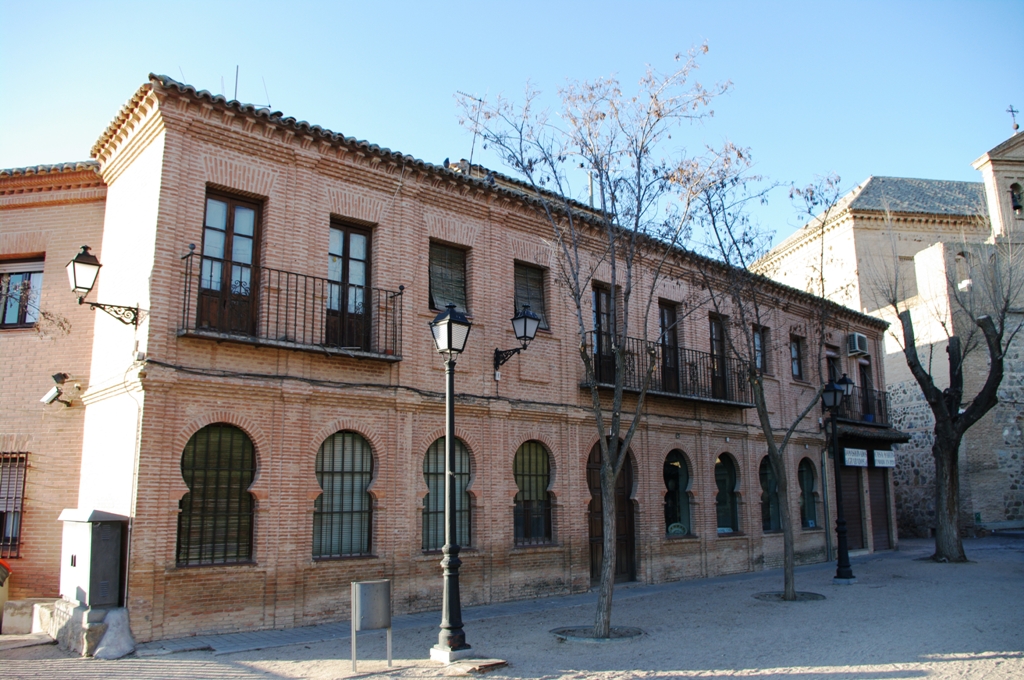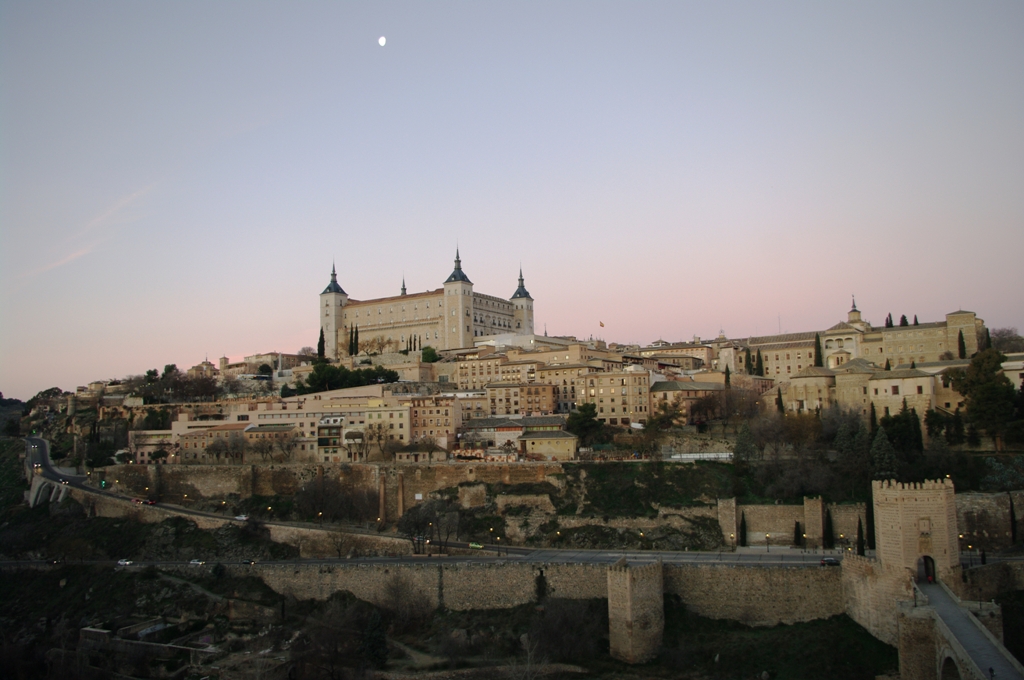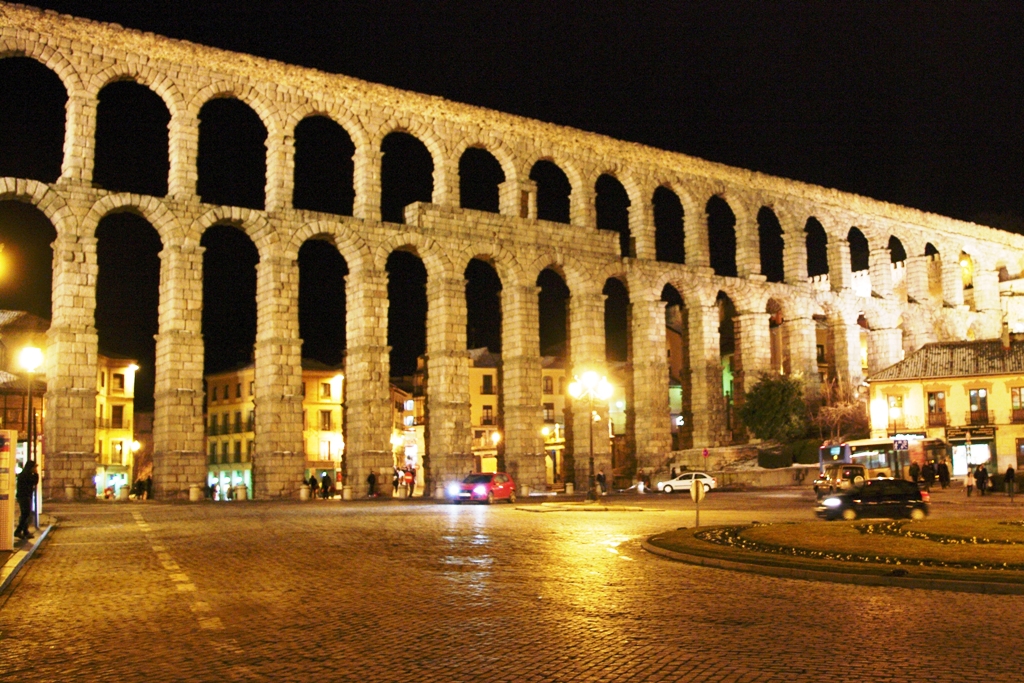I've decided to describe the three towns that made it to the UNESCO heritage list according to the alphabet: Avila, Segovia and Toledo.
Avila, the capital of the province carrying the same name, is located in the region of "Castilla y Leon" is elevated at the 1.132m above sea level and is a city proud of the largest number of gothic and roman per inhabitant in whole of Spain. They also like to say that they even have the highest number of restaurants and bars per capita – in Spain. I don’t know if the statements are correct or not, but they do give you an idea why you should visit the town which earned the nickname “The city of rocks and saints.” The honour of being excepted to the UNESCO heritage list dates back to 1985, but Avila is still less popular than the next two towns I will describe: Segovia and Toledo.

The biggest, most pompous and best seen attraction of the town is the town wall, which is very well preserved and used to protect the town from enemies. Today it still protects, but from the harsh winter winds and offers shade for the summer. The lowest temperature in January and not typically Spanish at all, as Avila can have temperatures well under freezing point. And in the summer it does get hot, above 30 degrees Celsius easily.
The wall is almost 1000 years old (the construction begun in 1090) and encloses an area of 31 hectares. It features 88 semi-circular towers in has the average height of 12 metres. The town has 9 entry gates that are still in use today. The mightiest building within the enclosure is the cathedral. Its construction begun in 1107 and was finished only in 1350. The upper part is in the roman style, while the parts constructed later possess gothic features.
Both within and outside the wall there are many museums and art galleries, as well as squares, among which the most imposing is the square of St. Teresa, with the St. Peter’s church. The town of Avila is closely connected to St. Teresa anyway, with the many events in the summer – including a procession – honouring her name.
Avila is also an interesting point for hikers, as you can start many shorter or longer hikes from here, as it is located quite high in the mountains (1.132 m).
You can reach Avila by car in a bit more than an hour if you start in Madrid (which is just under 100km away). If you start at Segovia, which is about 65km away, it’s a bit under an hour. And if you take the train in Madrid (it leaves every hour) the ride’s about 90 minutes long. Due to the tempting surroundings and as Segovia is quite near, I suggest you to book a
hostel in one of the two cities. There’s one in Avala named
Albergue Juvenil Profesor Arturo Duperier and it’s located near the town wall.
Segovia is the next town on the UNESCO heritage list and like Avila it is also the capital of the province with the same name in the region of Castilla y Leon. Segovia is also high in the mountains, at the exact 1000m above the sea level and with a similar climate as Avila – except that the lowest and highest temperature are a few degrees more extreme.
The biggest promotion of the town is the inclusion to the UNESCO heritage list and Segovia got placed on the list in 1985 due to the ancient Roman aqueduct. It’s a greatly preserved feature, erected when the Celtic town became part of Roman Empire. The town is also the most likely location of the grat battle that took place 75 BCE when Quintus Caecilius Metellus Pius defeated Quintusa Sertoriusa and Hirtuleiusa, who died in the battle.
Segovia was located on important trade routes and was a place where fabric merchants (above all wool traders) met. The growing Jewish population of the town began fabric manufacturing and made the town rich, naming this the golden era of Segovia.
The town of Segovia also has a rich Christian history and there are over 10 active monasteries there today. Among them is also the former main Synagogue, which became a monastery after the Jews were prosecuted out of Spain in 1492. Among other Christian legacy there’s also the cathedral of Segovia, which is the last Spanish cathedral build in the gothic style and was constructed between 1525 and 1577. It is an especially mighty site in the evening hours, due to the illumination.
Segovia also features many parks and gardens, among which the most imposing has got to be Alcazar, where once a cathedral stood. And there are also many other things, mostly museums and art galleries, but also the largest open air museum – which is the city itself. Walking the streets you are simply exploring the rich past of the Spanish town.
Segovia is 90 kilometres from Madrid, that’s about an hour’s drive either by car or train (which connects the cities often). It’s also a town where you can stay for a few days so if you which to book a
hostel, I’d suggest this one:
Albegrue Juvenil Emperador Teodosio
Toledo is the third and final city I’d suggest in this trilogy and it’s some 70 km south of the capital. You won’t be surprised to learn, that Toledo – also – wa placed on the UNESCO heritage list. It happened in 1986 and it was due to the historically rich old town and the coexistence of the Christian, Muslim and Jewish culture.
Toledo is – again – the capital of the province with the same name, and of the broader region of Castilla-La Mancha, and is located on the elevation of 529m. The climate is milder than in the previously mentioned towns. It was never below -10 Celsius and never above 40 either.
Several famous names were born or created in Toledo, among them Al-Zarqali, Garcilaso de la Vega, Eleanor of Toledo, Alfonso X and El Greco, who also has a large and rich museum here that includes his birth house and many exhibited works of the famous artist.
The history of Toledo dates back to bronze age, followed by the Roman Empire. Jewish population left a strong mark on the town back in the days when it was called Ṭulayṭulah, which is connected to the Hebrew word "טלטול" meaning to travel over, as the first Jewish settlers arrived 5 centuries BCE. But Toledo, also, was no exception and Jews had to leave it in 1492, leaving behind many traces of their stay. About as old is also the steel production of Toledo, sword making, to be more precise. Among the most famous buyers was Hannibal of Cartagena, who used them to attack Rome. After the second Punic war and Hannibal’s defeat Roman legions started buying their swords here.

Today you can see many former synagogues and mosques, which have become museums and testament to the city’s history. The city also has an imposing cathedral. The city is interwoven by narrow streets and squares within the city walls, that take you back to the medieval times. And if there were only one attraction to name, it would have to be the "Alcázar de Toledo", a mighty medieval castle on top of the hill in within the city wall limits. Since 2009 it has become the military museum.

Outside the city walls the most imposing building has got to be the mansion San Servando, which used to be a monastery that became ownership of knights Templars. The beginning of San Servando probably dates back to 7th century CE, but it was many times rebuilt and renovated. From the mansion you get a great view of the city walls, which are just a few minutes’ walk away. The river bank and the city centre are also well connected to the attractions with running escalators, as it is quite a task to get up to Alcazar.
Toledo is a city that would do justice to an independent article – to say the least – and you will probably want to stay here for a few days, so you can get
accommodation at the San Servando, as part of it is a youth hostel:
Albegrue Juvenil Castillo de San Servando. In the warm summer months you can also use the hostel swimming pool, making sure even the hottest days are bearable.
HI hostel Toledo
You can reach Toledo from Madrid in just 33 minutes by rail, and there’s a train every hour between 7am and 10pm. You can also use a car or a bus and you’ll reach Toledo in under an hour.
With this I’m concluding the tips for Madrid and Spain and would like to let you know that Spain is much more than just Barcelona or Ibiza. The inland of the country has rich history stretching from pre-history up until recent times.
To find a cheap flight to Spain I suggest you read the article in
GLOBETROTTER written by our HI Slovenia’s volunteer, and for the accommodation you can always trust the
Spanish Youth Hostel association which you can find by clicking here, or you can go to
www.youth-hostel.si, where you can find a connection to almost any HI hostel in the world.
Bon voyage an bring back many great memories from España!
